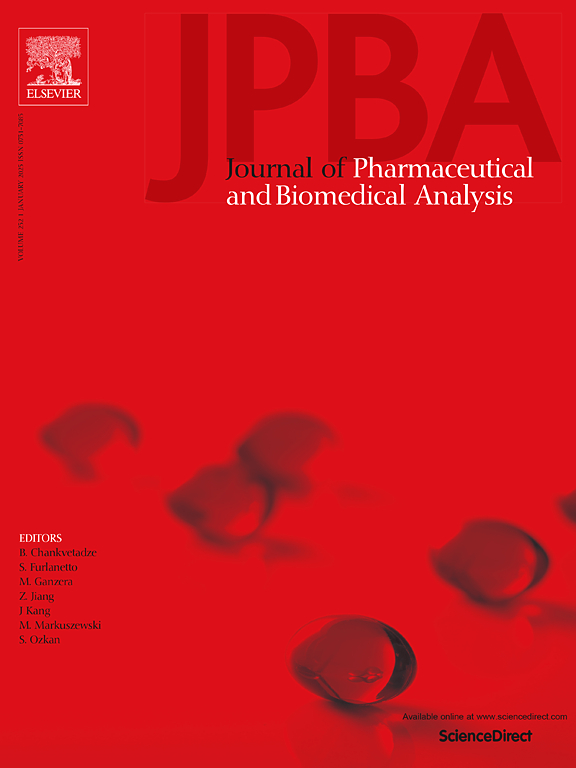From bioinformatics to clinical application: A new strategy in CRP detection with peptide aptamer
IF 3.1
3区 医学
Q2 CHEMISTRY, ANALYTICAL
Journal of pharmaceutical and biomedical analysis
Pub Date : 2025-03-21
DOI:10.1016/j.jpba.2025.116820
引用次数: 0
Abstract
C-Reactive protein (CRP) is a key biomarker for evaluating inflammation levels and estimating cardiovascular risk. However, current CRP detection methods rely on monoclonal antibodies (mAb), which possess shortcomings such as a lengthy preparation cycle, high cost, and poor repeatability. To address these challenges, we explored the potential of peptide aptamers as an alternative to mAb for CRP detection. Using some bioinformatics approaches, we designed and optimized peptide aptamers, selecting the dominant peptide aptamer C9m (KWRWRFRLSR) through experimental validation for its specific recognition of CRP. We then established a sandwich ELISA detection system combining C9m with CRP mAb. This system demonstrated a detection limit of 22.275 ng/mL CRP and exhibited excellent specificity, with no cross-reactivity observed with human serum albumin or γ-globulin. The method also showed high reproducibility, with intra- and inter-assay coefficients of variation (CV) less than 15 %, meeting laboratory testing standards. Furthermore, comparison with clinically used immunoturbidimetry revealed high consistency (r = 0.9891).
求助全文
约1分钟内获得全文
求助全文
来源期刊
CiteScore
6.70
自引率
5.90%
发文量
588
审稿时长
37 days
期刊介绍:
This journal is an international medium directed towards the needs of academic, clinical, government and industrial analysis by publishing original research reports and critical reviews on pharmaceutical and biomedical analysis. It covers the interdisciplinary aspects of analysis in the pharmaceutical, biomedical and clinical sciences, including developments in analytical methodology, instrumentation, computation and interpretation. Submissions on novel applications focusing on drug purity and stability studies, pharmacokinetics, therapeutic monitoring, metabolic profiling; drug-related aspects of analytical biochemistry and forensic toxicology; quality assurance in the pharmaceutical industry are also welcome.
Studies from areas of well established and poorly selective methods, such as UV-VIS spectrophotometry (including derivative and multi-wavelength measurements), basic electroanalytical (potentiometric, polarographic and voltammetric) methods, fluorimetry, flow-injection analysis, etc. are accepted for publication in exceptional cases only, if a unique and substantial advantage over presently known systems is demonstrated. The same applies to the assay of simple drug formulations by any kind of methods and the determination of drugs in biological samples based merely on spiked samples. Drug purity/stability studies should contain information on the structure elucidation of the impurities/degradants.

 求助内容:
求助内容: 应助结果提醒方式:
应助结果提醒方式:


